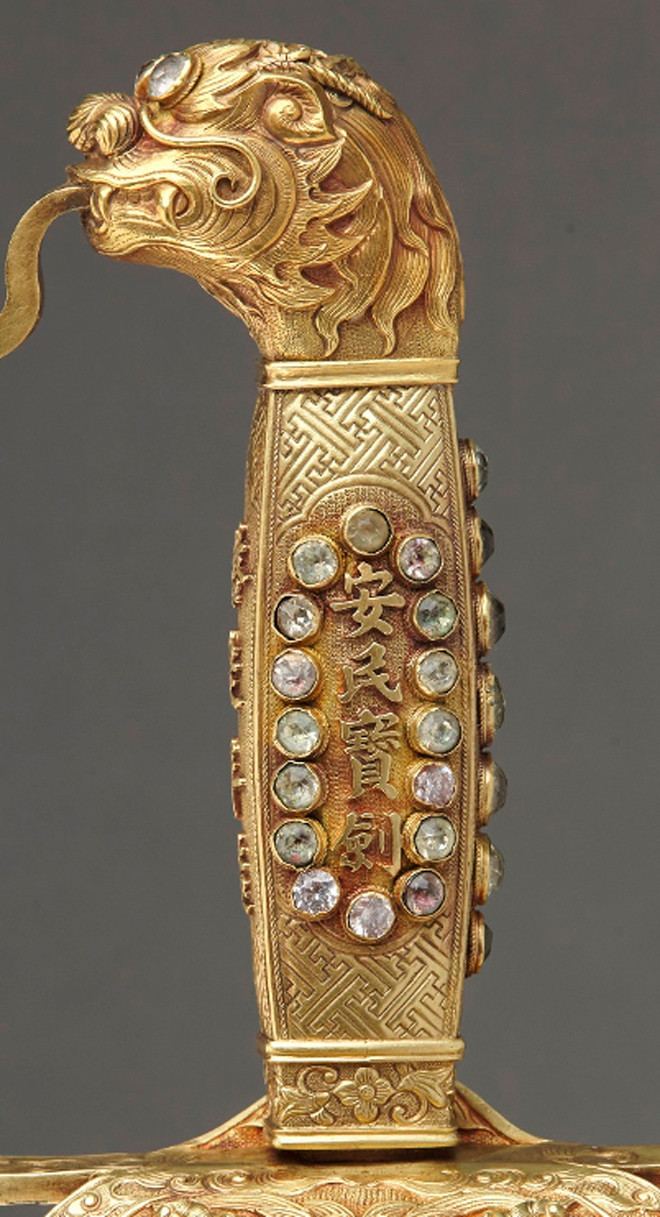 |
 |
The sword, a symbol representing Vietnam’s cultural values in a development period of the nation’s history, is displayed at the Vietnam National History Museum in Hanoi.
The images shown at the National Museum of History show the An Dan Sword was worn by Emperor Khai Dinh during his tours to localities and foreign trips, as well as important political events during his reign in 1916-1925.
The sword is seen with Emperor Khai Dinh in a portrait photo in 1916; documentary photos of the Emperor’s trip to the North in April 1918; in portrait photos of Emperor Khai Dinh when standing in front of Can Chanh Palace in 1919-1920; and the ceremony commemorating the end of World War I (1914-1918) held in Hue in 1919.
The sword is not only a weapon made of rare and valuable materials, but also a symbol of the Nguyen court and the authority of the King. It is historical evidence associated with the life and career of the 12th king in the Nguyen Dynasty (1916-1925).
AnDan sword was among the precious items transferred by the Nguyen Dynasty to the Provisional Revolutionary Government of the Democratic Republic of Vietnam in August 1945, which is currently preserved at the National Museum of History.
The sword, with its unique shape, structure and decorative patterns, provides authentic documents about the types of precious swords of the Nguyen Dynasty; and the decorative patterns of dragons, sun and flowers, typical in the Nguyen Dynasty's royal art in the early 20th century.
The sword gives additional information about the personality and life of Emperor Khai Dinh, a historical portrait that still needs more research and more objective assessments.
The An Dan sword has rare and precious materials such as gold, tortoiseshell and precious stones. The sword was elaborately and meticulously crafted by royal artisans of the Nguyen Dynasty. With different techniques such as forging, casting and carving, they create a very sophisticated product.
The sword is a precious heritage, representing traditional royal-style craftsmanship of the Nguyen Dynasty. It symbolizes Emperor Khai Dinh’s power. Analysts commented that it has the form and style similar to French and Western swords in the 18-19th centuries but it bears the typical art style of the Nguyen Dynasty.
Heavily influenced by the French and western lifestyle, fashion, architecture and fine arts, Emperor Khai Dinh was very knowledgeable about traditional Nguyen royal court rituals and he kept the cultural ideology imbued with oriental philosophy.
Tinh Le